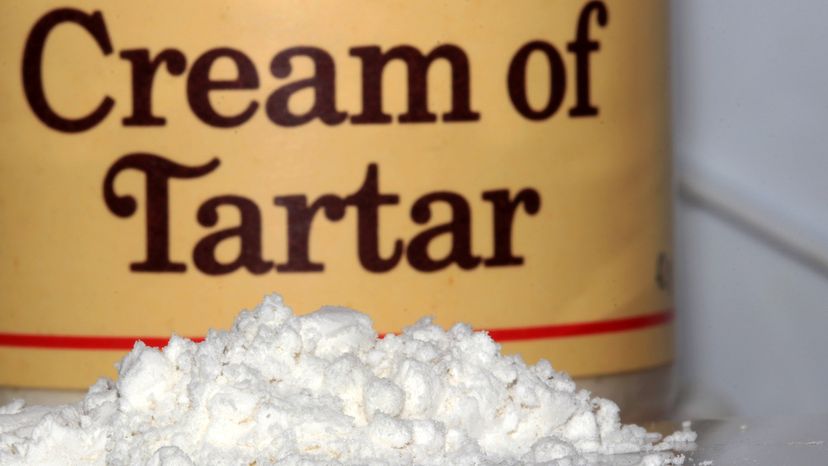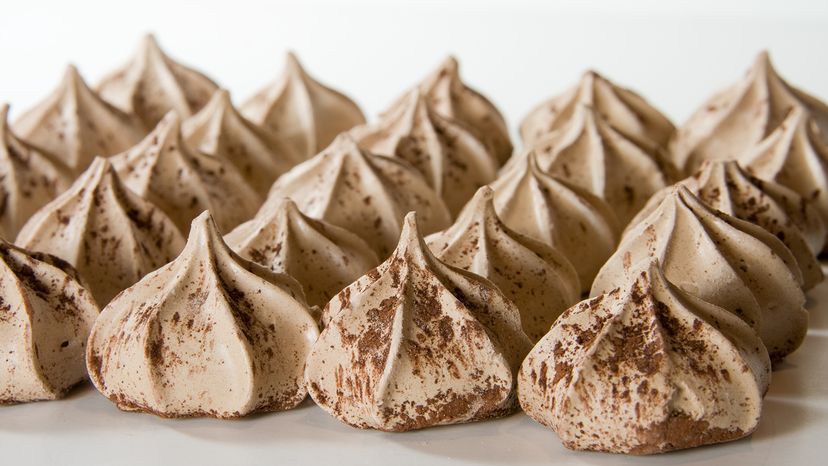 “As long as you don’t expose this inexpensive ingredient to moisture, cream of tartar keeps exceedingly well in your pantry and is handy for all sorts of purposes. Zen Rial/Moment/Getty Images
“As long as you don’t expose this inexpensive ingredient to moisture, cream of tartar keeps exceedingly well in your pantry and is handy for all sorts of purposes. Zen Rial/Moment/Getty Images
First of all, cream of tartar is not cream, and it’s not creamy. It’s also not used in tartar sauce. It’s a dry, acidic powder used in baking. And while it’s not a crucial ingredient in most recipes, using it will give your food a little more "oomph."
When it comes to using cream of tartar, it’s all about chemistry and balance, says Shawn Matijevich, chef instructor at the Culinary Institute of Virginia in Norfolk. "There are certain things we need to adjust the pH balance and make it more acidic, and cream of tartar is one of them," he says. Its benefits are seen in different ways.
Cream of tartar acts as a leavening agent in baked goods, meaning it’s a substance that causes the expansion of doughs and batters by releasing gases within them. For example, when a pinch of cream of tartar is beaten into egg whites (one of the most known uses), it speeds up the foaminess and helps stabilize those itsy bubbles you’re creating. The result is extra poufy meringue and cloudlike angel food cake.
 “As the secret ingredient in snickerdoodles, cream of tartar’s acidic bite also helps give these cinnamon sugar cookies their signature tartness.Abby Lanes/Moment Open/Getty Images
“As the secret ingredient in snickerdoodles, cream of tartar’s acidic bite also helps give these cinnamon sugar cookies their signature tartness.Abby Lanes/Moment Open/Getty Images
It’s also great for candy making, Matijevich says. For example, when blended into simple syrup, as when making something like lollypops, cream of tartar breaks down sugar molecules, preventing crystallization and ensuring a clear, glassy sucker.
Cream of tartar also can brighten the color of boiled or steamed vegetables, and be used as a nontoxic, earth-friendly household cleaner.
Considering cream of tartar is cheap and can allegedly last forever in your pantry, there’s really no reason not to have it around.
Where Does Cream of Tartar Come From?
Cream of tartar is known chemically as potassium bitartrate, also referred to as potassium hydrogen tartrate or KC4H5O6. It’s the salt of parent compound tartaric acid. Thankfully, the culinary world has adopted a more palatable name, calling it simply cream of tartar. The "tartar" part comes from "tartaric" in tartaric acid. But why "cream" was added to the name is anyone’s guess.
Potassium bitartrate is a potassium acid salt, which is a waste product created during wine making, Matijevich says. The salt develops when grapes ferment and is the same crystal-like stuff you might find on the end of a wine cork or on the rim of fresh jams or jellies when stored below 50 degrees Fahrenheit (10 degrees C). Those crystals are called "wine diamonds" or "beeswing," and are the crude form of cream of tartar.
The modern way of making cream of tartar dates back to 1768, thanks to Swedish chemist C.W. Scheele. The process involves treating wine lees (the solids leftover from crushed grapes during winemaking) with hot water to dissolve the potassium bitartrate. When the water evaporates, the crystals — or wine diamonds — form. They are then removed and purified before being packaged in jars or tins or bags, and placed on the shelves of your grocer’s baking aisle.
French physicist Jean-Baptiste Biot, in 1832, is credited with discovering various physical properties of cream of tartar. Later, in 1847, Louis Pasteur also investigated cream of tartar, and it became wildly popular with the French for cooking. Eventually, the rest of the world caught on.
Cream of tartar is actually made up of sodium bicarbonate (baking soda) and tartaric acid (cream of tartar). If you’re ever out of cream of tartar, you can substitute baking powder. Just use 1 ½ teaspoons of baking powder in place of 1 teaspoon cream of tartar.
 “These meringue cookies likely owe at least some of their pouf to cream of tartar.Kathy Dewar/E+/Getty Images
“These meringue cookies likely owe at least some of their pouf to cream of tartar.Kathy Dewar/E+/Getty Images
What Are the Health Benefits of Cream of Tartar?
Cream of tartar doesn’t offer much in nutritional value other than it is packed with potassium, a mineral that keeps your bones strong and helps ward off strokes. But it also may hold other health benefits.
According to the Farmers’ Almanac, cream of tartar is considered an effective laxative (though you’d have to consume a lot of it to experience those effects). Some people also believe it can help curb nicotine cravings and, as such, help cigarette smokers kick the habit. Politifact debunked that claim, however, in October 2019. People have also said that the ingredient helps with urinary tract infections, but we found no scientific evidence to back up that claim either.
While cream of tartar is considered a safe ingredient, do use caution. At least two people have developed life-threatening hyperkalemia (abnormally high potassium levels) after intentionally consuming high levels of it as a body cleanse treatment, according to a case study published in the Journal of Medical Toxicology.
Now That’s Interesting
There is evidence that cream of tartar (at least in its crude form) was widespread even in medieval times. Geoffrey Chaucer referenced it in "The Canon’s Yeoman’s Tale" in "The Canterbury Tales": Cley maad with hors or mannes heer, and oille / Of tartre, alum glas, berme, wort, and argoille, which translates to Clay made with horse or man’s hair, and oil / Of tartar, crystalized alum, yeast, unfermented malt, and argol…














































